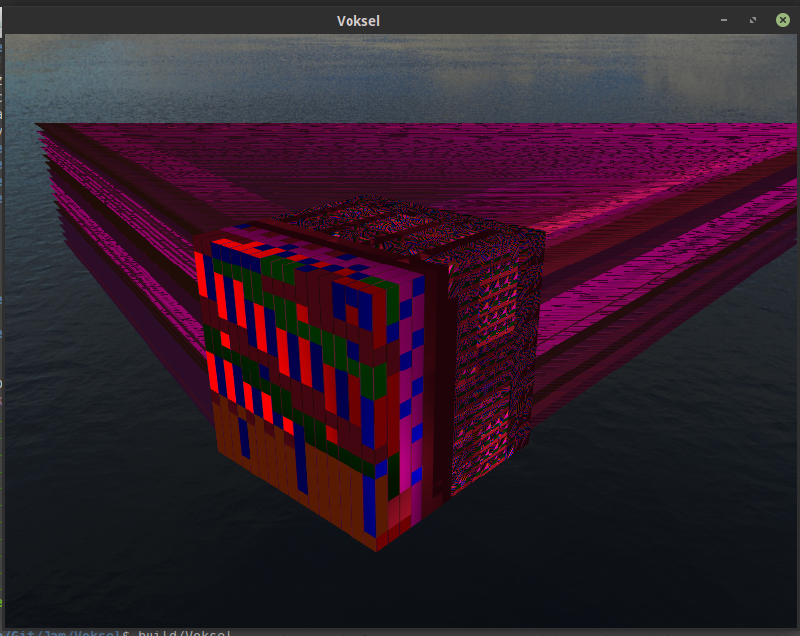Nota Bene: This serie of articles is mainly focused on my experience while making Voksel, a 3D game made in a Minecraft style, so I will only write about my opinion and how I solve the problems I met!
A month ago, I got this strange idea after having taught myself on OpenGL: What if I made my own rendering engine? It could be funny, and I could learn a lot! That’s how I started making Zavtrak. Few days after, another idea hit me: what if I made my own version of Minecraft using this engine? So that’s how my journey started, on a sunny day of September!
I made a small ToDo to know where I was going:
- abstraction code for:
- VAO, VBO, EBO
- shaders
- free fly camera
- window creation
(my goal was, and still is, to create a 3D rendering library acting as a nearly 0 cost abstraction for OpenGL)
A VAO acts an array storing vertex (a collection of data per 3D point) attribute pointers, used by OpenGL when given a VBO (vertex buffer object, storing vertices) to know if it looking at a position, a color, a texture coordinate… in a given vertex.
An EBO (element buffer object) is an array storing indexes of vertices (stored in a given VBO) to “link” them:
| |
defines a right-angle triangle (when giving the data to OpenGL). An EBO avoids repeting the same vertex multiple times, which can be pretty heavy when giving a lot of vertices to the GPU, by only defining the index of the element to use.
A shader is a small program (written in GLSL) to tell OpenGL how to draw a single pixel, given a vertex.
My idea was to have something like this:
| |
which is basically the same thing as this (without the window configuration and all, which you can find here), a lot shorter and easier to understand, uh?
The biggest problem I have now is that we must configure everything ourself (setting vertex attributes, and creating a VAO and a VBO, binding them…) (and I still didn’t fix it, since I wanted to focus on the game and rewrite the engine later).
After writing a lot of redundant code, I could start writing a small game with it (you can find my experimentations here). My biggest struggle when I started writing the game was the vertex attributes (as you can see on the cover image, I messed up my vertex attributes and OpenGL handled it as if everything was fine).

This concludes the first article of this serie, which is more a “explain-me-the-plot” article than a “the-problems-of-writing-a-rendering-engine”, but if you want to know my pros and cons of making your own, here they are:
Pros
- you control everything
- you can give it the interface you want (I mean, not graphically but programmatically)
- you understand how it works under the hood
Cons
- writing your own rendering engine is really hard (I made a very simple one since Zavtrak acts as an abstraction layer for OpenGL)
- it can take a lot of time (and headaches !)
I will now explain briefly the purpose of this video game I am making, Voksel.
As I said, it is a 3D exploration game made in a Minecraft style, where the player can explore a procedurally generated world made of voxel (3D pixels). The goal behind this project is to create a game in the same spirit as Proteus: an audio-visual exploration game, but with something more: helping the players to relax.
P.S.: I wrote this article in one go, only keeping in mind “how could I introduce you to the problems we met when creating a game”, so it can be quite disjointed, I am sorry about that
